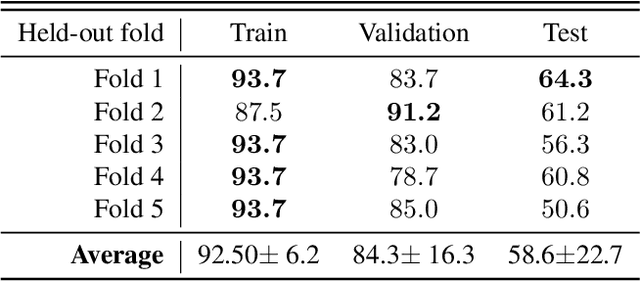Somaieh Amraee
Multiple Toddler Tracking in Indoor Videos
Nov 29, 2023



Abstract:Multiple toddler tracking (MTT) involves identifying and differentiating toddlers in video footage. While conventional multi-object tracking (MOT) algorithms are adept at tracking diverse objects, toddlers pose unique challenges due to their unpredictable movements, various poses, and similar appearance. Tracking toddlers in indoor environments introduces additional complexities such as occlusions and limited fields of view. In this paper, we address the challenges of MTT and propose MTTSort, a customized method built upon the DeepSort algorithm. MTTSort is designed to track multiple toddlers in indoor videos accurately. Our contributions include discussing the primary challenges in MTT, introducing a genetic algorithm to optimize hyperparameters, proposing an accurate tracking algorithm, and curating the MTTrack dataset using unbiased AI co-labeling techniques. We quantitatively compare MTTSort to state-of-the-art MOT methods on MTTrack, DanceTrack, and MOT15 datasets. In our evaluation, the proposed method outperformed other MOT methods, achieving 0.98, 0.68, and 0.98 in multiple object tracking accuracy (MOTA), higher order tracking accuracy (HOTA), and iterative and discriminative framework 1 (IDF1) metrics, respectively.
Challenges in Video-Based Infant Action Recognition: A Critical Examination of the State of the Art
Nov 21, 2023



Abstract:Automated human action recognition, a burgeoning field within computer vision, boasts diverse applications spanning surveillance, security, human-computer interaction, tele-health, and sports analysis. Precise action recognition in infants serves a multitude of pivotal purposes, encompassing safety monitoring, developmental milestone tracking, early intervention for developmental delays, fostering parent-infant bonds, advancing computer-aided diagnostics, and contributing to the scientific comprehension of child development. This paper delves into the intricacies of infant action recognition, a domain that has remained relatively uncharted despite the accomplishments in adult action recognition. In this study, we introduce a groundbreaking dataset called ``InfActPrimitive'', encompassing five significant infant milestone action categories, and we incorporate specialized preprocessing for infant data. We conducted an extensive comparative analysis employing cutting-edge skeleton-based action recognition models using this dataset. Our findings reveal that, although the PoseC3D model achieves the highest accuracy at approximately 71%, the remaining models struggle to accurately capture the dynamics of infant actions. This highlights a substantial knowledge gap between infant and adult action recognition domains and the urgent need for data-efficient pipeline models.
 Add to Chrome
Add to Chrome Add to Firefox
Add to Firefox Add to Edge
Add to Edge